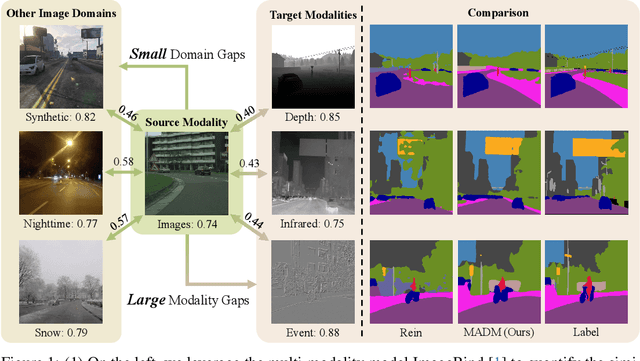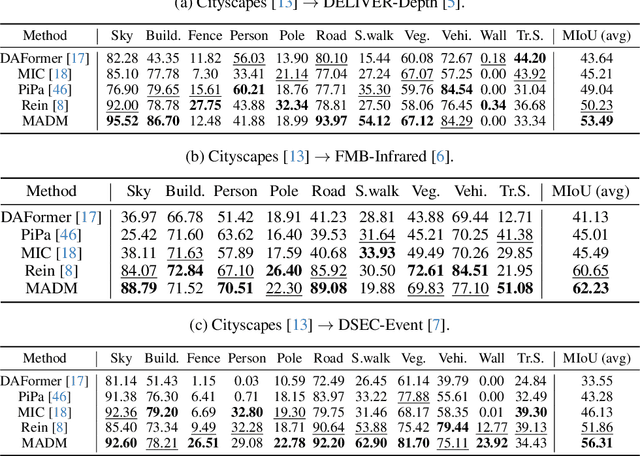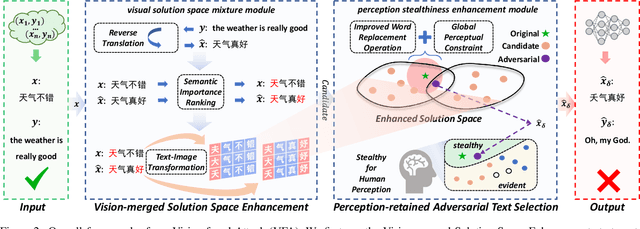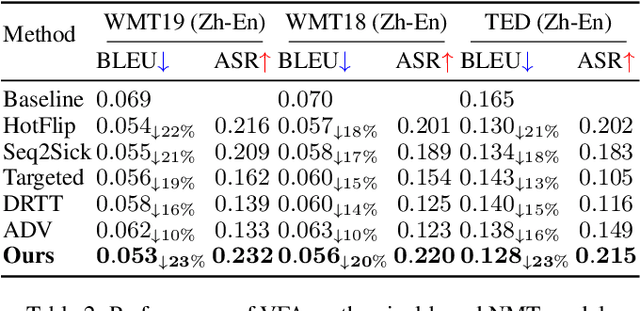Yu Liang
Embed Progressive Implicit Preference in Unified Space for Deep Collaborative Filtering
May 28, 2025Abstract:Embedding-based collaborative filtering, often coupled with nearest neighbor search, is widely deployed in large-scale recommender systems for personalized content selection. Modern systems leverage multiple implicit feedback signals (e.g., clicks, add to cart, purchases) to model user preferences comprehensively. However, prevailing approaches adopt a feedback-wise modeling paradigm, which (1) fails to capture the structured progression of user engagement entailed among different feedback and (2) embeds feedback-specific information into disjoint spaces, making representations incommensurable, increasing system complexity, and leading to suboptimal retrieval performance. A promising alternative is Ordinal Logistic Regression (OLR), which explicitly models discrete ordered relations. However, existing OLR-based recommendation models mainly focus on explicit feedback (e.g., movie ratings) and struggle with implicit, correlated feedback, where ordering is vague and non-linear. Moreover, standard OLR lacks flexibility in handling feedback-dependent covariates, resulting in suboptimal performance in real-world systems. To address these limitations, we propose Generalized Neural Ordinal Logistic Regression (GNOLR), which encodes multiple feature-feedback dependencies into a unified, structured embedding space and enforces feedback-specific dependency learning through a nested optimization framework. Thus, GNOLR enhances predictive accuracy, captures the progression of user engagement, and simplifies the retrieval process. We establish a theoretical comparison with existing paradigms, demonstrating how GNOLR avoids disjoint spaces while maintaining effectiveness. Extensive experiments on ten real-world datasets show that GNOLR significantly outperforms state-of-the-art methods in efficiency and adaptability.
ReJSHand: Efficient Real-Time Hand Pose Estimation and Mesh Reconstruction Using Refined Joint and Skeleton Features
Mar 08, 2025Abstract:Accurate hand pose estimation is vital in robotics, advancing dexterous manipulation in human-computer interaction. Toward this goal, this paper presents ReJSHand (which stands for Refined Joint and Skeleton Features), a cutting-edge network formulated for real-time hand pose estimation and mesh reconstruction. The proposed framework is designed to accurately predict 3D hand gestures under real-time constraints, which is essential for systems that demand agile and responsive hand motion tracking. The network's design prioritizes computational efficiency without compromising accuracy, a prerequisite for instantaneous robotic interactions. Specifically, ReJSHand comprises a 2D keypoint generator, a 3D keypoint generator, an expansion block, and a feature interaction block for meticulously reconstructing 3D hand poses from 2D imagery. In addition, the multi-head self-attention mechanism and a coordinate attention layer enhance feature representation, streamlining the creation of hand mesh vertices through sophisticated feature mapping and linear transformation. Regarding performance, comprehensive evaluations on the FreiHand dataset demonstrate ReJSHand's computational prowess. It achieves a frame rate of 72 frames per second while maintaining a PA-MPJPE (Position-Accurate Mean Per Joint Position Error) of 6.3 mm and a PA-MPVPE (Position-Accurate Mean Per Vertex Position Error) of 6.4 mm. Moreover, our model reaches scores of 0.756 for F@05 and 0.984 for F@15, surpassing modern pipelines and solidifying its position at the forefront of robotic hand pose estimators. To facilitate future studies, we provide our source code at ~\url{https://github.com/daishipeng/ReJSHand}.
Towards Accurate Binary Spiking Neural Networks: Learning with Adaptive Gradient Modulation Mechanism
Feb 20, 2025



Abstract:Binary Spiking Neural Networks (BSNNs) inherit the eventdriven paradigm of SNNs, while also adopting the reduced storage burden of binarization techniques. These distinct advantages grant BSNNs lightweight and energy-efficient characteristics, rendering them ideal for deployment on resource-constrained edge devices. However, due to the binary synaptic weights and non-differentiable spike function, effectively training BSNNs remains an open question. In this paper, we conduct an in-depth analysis of the challenge for BSNN learning, namely the frequent weight sign flipping problem. To mitigate this issue, we propose an Adaptive Gradient Modulation Mechanism (AGMM), which is designed to reduce the frequency of weight sign flipping by adaptively adjusting the gradients during the learning process. The proposed AGMM can enable BSNNs to achieve faster convergence speed and higher accuracy, effectively narrowing the gap between BSNNs and their full-precision equivalents. We validate AGMM on both static and neuromorphic datasets, and results indicate that it achieves state-of-the-art results among BSNNs. This work substantially reduces storage demands and enhances SNNs' inherent energy efficiency, making them highly feasible for resource-constrained environments.
Spiking Vision Transformer with Saccadic Attention
Feb 18, 2025Abstract:The combination of Spiking Neural Networks (SNNs) and Vision Transformers (ViTs) holds potential for achieving both energy efficiency and high performance, particularly suitable for edge vision applications. However, a significant performance gap still exists between SNN-based ViTs and their ANN counterparts. Here, we first analyze why SNN-based ViTs suffer from limited performance and identify a mismatch between the vanilla self-attention mechanism and spatio-temporal spike trains. This mismatch results in degraded spatial relevance and limited temporal interactions. To address these issues, we draw inspiration from biological saccadic attention mechanisms and introduce an innovative Saccadic Spike Self-Attention (SSSA) method. Specifically, in the spatial domain, SSSA employs a novel spike distribution-based method to effectively assess the relevance between Query and Key pairs in SNN-based ViTs. Temporally, SSSA employs a saccadic interaction module that dynamically focuses on selected visual areas at each timestep and significantly enhances whole scene understanding through temporal interactions. Building on the SSSA mechanism, we develop a SNN-based Vision Transformer (SNN-ViT). Extensive experiments across various visual tasks demonstrate that SNN-ViT achieves state-of-the-art performance with linear computational complexity. The effectiveness and efficiency of the SNN-ViT highlight its potential for power-critical edge vision applications.
QP-SNN: Quantized and Pruned Spiking Neural Networks
Feb 09, 2025



Abstract:Brain-inspired Spiking Neural Networks (SNNs) leverage sparse spikes to encode information and operate in an asynchronous event-driven manner, offering a highly energy-efficient paradigm for machine intelligence. However, the current SNN community focuses primarily on performance improvement by developing large-scale models, which limits the applicability of SNNs in resource-limited edge devices. In this paper, we propose a hardware-friendly and lightweight SNN, aimed at effectively deploying high-performance SNN in resource-limited scenarios. Specifically, we first develop a baseline model that integrates uniform quantization and structured pruning, called QP-SNN baseline. While this baseline significantly reduces storage demands and computational costs, it suffers from performance decline. To address this, we conduct an in-depth analysis of the challenges in quantization and pruning that lead to performance degradation and propose solutions to enhance the baseline's performance. For weight quantization, we propose a weight rescaling strategy that utilizes bit width more effectively to enhance the model's representation capability. For structured pruning, we propose a novel pruning criterion using the singular value of spatiotemporal spike activities to enable more accurate removal of redundant kernels. Extensive experiments demonstrate that integrating two proposed methods into the baseline allows QP-SNN to achieve state-of-the-art performance and efficiency, underscoring its potential for enhancing SNN deployment in edge intelligence computing.
Binary Event-Driven Spiking Transformer
Jan 10, 2025



Abstract:Transformer-based Spiking Neural Networks (SNNs) introduce a novel event-driven self-attention paradigm that combines the high performance of Transformers with the energy efficiency of SNNs. However, the larger model size and increased computational demands of the Transformer structure limit their practicality in resource-constrained scenarios. In this paper, we integrate binarization techniques into Transformer-based SNNs and propose the Binary Event-Driven Spiking Transformer, i.e. BESTformer. The proposed BESTformer can significantly reduce storage and computational demands by representing weights and attention maps with a mere 1-bit. However, BESTformer suffers from a severe performance drop from its full-precision counterpart due to the limited representation capability of binarization. To address this issue, we propose a Coupled Information Enhancement (CIE) method, which consists of a reversible framework and information enhancement distillation. By maximizing the mutual information between the binary model and its full-precision counterpart, the CIE method effectively mitigates the performance degradation of the BESTformer. Extensive experiments on static and neuromorphic datasets demonstrate that our method achieves superior performance to other binary SNNs, showcasing its potential as a compact yet high-performance model for resource-limited edge devices.
Unsupervised Modality Adaptation with Text-to-Image Diffusion Models for Semantic Segmentation
Oct 29, 2024



Abstract:Despite their success, unsupervised domain adaptation methods for semantic segmentation primarily focus on adaptation between image domains and do not utilize other abundant visual modalities like depth, infrared and event. This limitation hinders their performance and restricts their application in real-world multimodal scenarios. To address this issue, we propose Modality Adaptation with text-to-image Diffusion Models (MADM) for semantic segmentation task which utilizes text-to-image diffusion models pre-trained on extensive image-text pairs to enhance the model's cross-modality capabilities. Specifically, MADM comprises two key complementary components to tackle major challenges. First, due to the large modality gap, using one modal data to generate pseudo labels for another modality suffers from a significant drop in accuracy. To address this, MADM designs diffusion-based pseudo-label generation which adds latent noise to stabilize pseudo-labels and enhance label accuracy. Second, to overcome the limitations of latent low-resolution features in diffusion models, MADM introduces the label palette and latent regression which converts one-hot encoded labels into the RGB form by palette and regresses them in the latent space, thus ensuring the pre-trained decoder for up-sampling to obtain fine-grained features. Extensive experimental results demonstrate that MADM achieves state-of-the-art adaptation performance across various modality tasks, including images to depth, infrared, and event modalities. We open-source our code and models at https://github.com/XiaRho/MADM.
Towards Natural Image Matting in the Wild via Real-Scenario Prior
Oct 09, 2024



Abstract:Recent approaches attempt to adapt powerful interactive segmentation models, such as SAM, to interactive matting and fine-tune the models based on synthetic matting datasets. However, models trained on synthetic data fail to generalize to complex and occlusion scenes. We address this challenge by proposing a new matting dataset based on the COCO dataset, namely COCO-Matting. Specifically, the construction of our COCO-Matting includes accessory fusion and mask-to-matte, which selects real-world complex images from COCO and converts semantic segmentation masks to matting labels. The built COCO-Matting comprises an extensive collection of 38,251 human instance-level alpha mattes in complex natural scenarios. Furthermore, existing SAM-based matting methods extract intermediate features and masks from a frozen SAM and only train a lightweight matting decoder by end-to-end matting losses, which do not fully exploit the potential of the pre-trained SAM. Thus, we propose SEMat which revamps the network architecture and training objectives. For network architecture, the proposed feature-aligned transformer learns to extract fine-grained edge and transparency features. The proposed matte-aligned decoder aims to segment matting-specific objects and convert coarse masks into high-precision mattes. For training objectives, the proposed regularization and trimap loss aim to retain the prior from the pre-trained model and push the matting logits extracted from the mask decoder to contain trimap-based semantic information. Extensive experiments across seven diverse datasets demonstrate the superior performance of our method, proving its efficacy in interactive natural image matting. We open-source our code, models, and dataset at https://github.com/XiaRho/SEMat.
Vision-fused Attack: Advancing Aggressive and Stealthy Adversarial Text against Neural Machine Translation
Sep 08, 2024



Abstract:While neural machine translation (NMT) models achieve success in our daily lives, they show vulnerability to adversarial attacks. Despite being harmful, these attacks also offer benefits for interpreting and enhancing NMT models, thus drawing increased research attention. However, existing studies on adversarial attacks are insufficient in both attacking ability and human imperceptibility due to their sole focus on the scope of language. This paper proposes a novel vision-fused attack (VFA) framework to acquire powerful adversarial text, i.e., more aggressive and stealthy. Regarding the attacking ability, we design the vision-merged solution space enhancement strategy to enlarge the limited semantic solution space, which enables us to search for adversarial candidates with higher attacking ability. For human imperceptibility, we propose the perception-retained adversarial text selection strategy to align the human text-reading mechanism. Thus, the finally selected adversarial text could be more deceptive. Extensive experiments on various models, including large language models (LLMs) like LLaMA and GPT-3.5, strongly support that VFA outperforms the comparisons by large margins (up to 81%/14% improvements on ASR/SSIM).
Low Saturation Confidence Distribution-based Test-Time Adaptation for Cross-Domain Remote Sensing Image Classification
Aug 29, 2024Abstract:Although the Unsupervised Domain Adaptation (UDA) method has improved the effect of remote sensing image classification tasks, most of them are still limited by access to the source domain (SD) data. Designs such as Source-free Domain Adaptation (SFDA) solve the challenge of a lack of SD data, however, they still rely on a large amount of target domain data and thus cannot achieve fast adaptations, which seriously hinders their further application in broader scenarios. The real-world applications of cross-domain remote sensing image classification require a balance of speed and accuracy at the same time. Therefore, we propose a novel and comprehensive test time adaptation (TTA) method -- Low Saturation Confidence Distribution Test Time Adaptation (LSCD-TTA), which is the first attempt to solve such scenarios through the idea of TTA. LSCD-TTA specifically considers the distribution characteristics of remote sensing images, including three main parts that concentrate on different optimization directions: First, low saturation distribution (LSD) considers the dominance of low-confidence samples during the later TTA stage. Second, weak-category cross-entropy (WCCE) increases the weight of categories that are more difficult to classify with less prior knowledge. Finally, diverse categories confidence (DIV) comprehensively considers the category diversity to alleviate the deviation of the sample distribution. By weighting the abovementioned three modules, the model can widely, quickly and accurately adapt to the target domain without much prior target distributions, repeated data access, and manual annotation. We evaluate LSCD-TTA on three remote-sensing image datasets. The experimental results show that LSCD-TTA achieves a significant gain of 4.96%-10.51% with Resnet-50 and 5.33%-12.49% with Resnet-101 in average accuracy compared to other state-of-the-art DA and TTA methods.
 Add to Chrome
Add to Chrome Add to Firefox
Add to Firefox Add to Edge
Add to Edge